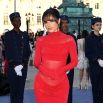
Think of clubbing and rave dance parties. What immediately comes to mind is the throbbing, stimulating, and exhilarating atmosphere that goes with it. Well, those beats that make you nod with your head are called electronic dance music or EDM.
If you ever wondered how this music genre came about, read on and take a virtual tour of its origin. Get hooked and know where to get your "party music" fix and toss-up with your drinks.
EDM and its beginnings
While EDM sounds may seem futuristic and relatively new, the genre has its roots as far back to almost 50 years ago. The Los Angeles Film School defines electronic dance music as a "compilation of electronic music subgenres that are intended for crowds of dancers." EDM has encompassed decades and was transformed by picking up experiences from each era, such as disco music, techno, synthpop, house music, drum and bass, rave, trap, dubstep, and a whole lot more.
EDM was pioneered in the late 1970s by the disco music. Towards the '80s, synthpop or synth music started to surface specifically from mainstream music in Europe. The German electronic pop band, Kraftwerk, had a tremendous influence on the development of electronic music using experimental sounds and technical innovations.
The 1990s saw the emergence of Frankie Knuckles called the "Godfather of House." With the unique electronic sound he started, it became trendy, particularly among the gay community in Chicago. This kind of music was played in rave parties usually done in clubs, festivals, or other informal gatherings often held in abandoned warehouses. It mostly deemed illegal due to suspected rampant drug abuse by the partygoers.
The 90s decade was further ushered in by note-worthy dance hits such as "One More Time" by Daft Punk, "Hey Boy, Hey Girl" by The Chemical Brothers, "The Rhythm of the Night" by Corona, "Blue (Da Ba Dee)" by Eiffel 65. During this time, the genre has gained extreme popularity and has started dominating mainstream charts, especially in Europe. It was during this decade that EDM branched out into several sub-genres more popularly dubbed as techno, house, hardcore rave, dub, trance, drum, and bass.
Towards the end of the decade, big record labels had their eyes set on another variation of EDM called technopop. The Queen of Pop Madonna launched the album "Ray of Light," which served as a springboard in the creation of technopop widely-acclaimed worldwide.
EDM now
By the turn of the new century and up to the present, EDM has continued to prevail with more experimental sounds and pop icon collaborations by DJ's such as Martin Garrix, Steve Aoki, Zedd, The Chainsmokers, Hardwell, Dimitri Vegas & Like Mike, Marshmello, and David Guetta to name a few.
Other than being a music genre, EDM comes in the form of rave, which has become a culture. It has established a wide following all over the world. "Raving" is attending annual festivals and huge events with thousands of fans bouncing and gyrating to the beats and synths of electronically produced tracks.
EDM is an instant "upper" for listeners and undeniably gets anyone into party vibe. DJs play a significant role in sprucing up the tracks and mixing them up to achieve the desired hypnotic, trance-like effect to dance to in clubs and parties.
On streaming platforms, there are EDM playlists ready for a mood boost or an energizer to start the day. EDM also makes a perfect workout soundtrack with a distinct 16-beat intro, a catchy melody, and progression that is sure to spin you to an adrenaline rush.
© 2025 MusicTimes.com All rights reserved. Do not reproduce without permission.




